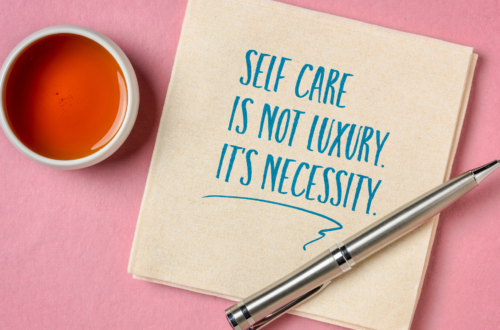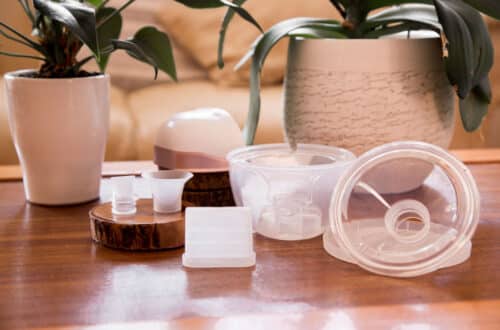
How to Combine Breastfeeding and Pumping
- What are the benefits of combining breastfeeding and pumping?
- Tips on how to combine breastfeeding and pumping
- What breast pump should I choose?
- Frequently asked questions regarding pumping breast milk
What are the benefits of combining breastfeeding and pumping?
For mom and baby, breastfeeding is a wonderful way to develop their relationship. When you breastfeed, a potent hormone called oxytocin is released that promotes closeness between you and your child. When you are out and about, it is also wonderful to get rid of a few more feeding items because all you actually need is your body and your baby.
Nevertheless, being the primary caregiver for your baby, can be demanding, particularly when they are going through a growth spurt or cluster of feedings. You might think that nursing takes up most of your time. Being a new mom is exhausting enough without having to worry about feeding your kid at night. Some mothers believe that when they return to work, they must switch to exclusively pumping. However, you can alternate between pumping and nursing if you have the correct schedule and materials.
Expressing breast milk can actually be a wonderful experience in your breastfeeding journey. Not only does it give you the opportunity to be away from your baby for longer amounts of time. It also enables your baby and the other caregivers to develop a bond. Many fathers and partners will value the opportunity to establish a close relationship with their baby through bottle feeding.
To increase your milk supply, you might also add pumping in between breastfeeding sessions. Therefore, you can build up a nice milk stash while simultaneously increase your milk supply. At the same time, expressing breast milk allows your baby to get used to a bottle. Even when exclusively breastfed, some infants don’t like bottles or never learn how to drink from one. Even if you intend to nurse most of the time, pumping and occasionally giving your baby a bottle enables them to become accustomed to drinking from a bottle.
Tips on how to combine breastfeeding and pumping
When you understand what to do, combining breastfeeding with pumping is not too difficult. To make things simple, follow these simple steps:
1. First, breastfeed, then pump
Feed baby first before pumping. Before emptying your breasts further, you’ll be able to tell if your baby has received enough milk in this method.
2. Have a breastfeeding and pumping schedule
The process can be made simpler by following a nursing schedule in some cases. Since newborns breastfeed more frequently, it could take some time to establish a nursing plan with your child. You’ll at least know when to anticipate each pumping session if you always pump after each feeding, which can make your life easier.
It will take some practice to make a timetable that works for your family. The most crucial thing to keep in mind is to breastfeed as frequently as you can before pumping. If you pump first, you risk running out of milk before the baby needs it.
When you are at work, it helps to follow a general pumping schedule of expressing milk every 4 hours.
3. Acquiring all the necessary supplies
Make sure you have everything you require, including a functioning breast pump, milk storage containers, milk freezer bags, and a pumping bra. The efficiency of a breast pump is influenced by the quantity of suction, hence a high-quality breast pump is essential. Milk must be properly stored in freezer bags and storage containers.
4. Don’t start expressing milk too soon
It is advised that you wait at least six weeks to start pumping if your baby is growing normally and it is not medically necessary for you to do so right away. This is due to the fact that your milk production and feeding schedule are still developing. Starting to pump too early can result in an excess of milk, which can be uncomfortable for both you and your baby.
5. Make sure to bottle feed properly
When you do give your infant a bottle, it’s crucial to feed them properly and in a comfortable position. To prevent them from immediately drinking the entire bottle, place them in an upright position and feed them gently while giving them breaks. This can prevent children from experiencing stomach discomfort and from favoring the bottle.
6. Try to avoid formula when you can
In some circumstances, formula is required to help babies gain weight. Keeping your baby on breast milk exclusively over formula, on the other hand, can help you maintain breastfeeding for longer. The formula fills babies up and causes them to breastfeed less, reducing breast milk supply.
7. Keep a positive mindset
Breastfeeding and pumping can be extremely difficult for new mothers. Breastfeeding your baby around the clock and pumping on top of that takes a lot of your time and energy. Try to maintain a positive attitude and remember that this is only a temporary stage in your life.
8. Stay hydrated and fed
Remember to look after yourself as well. Breastfeeding and pumping will deplete your energy, so it is critical to stay hydrated and fed. To make things easier, set up a designated area for pumping and breastfeeding, complete with snacks and a large water bottle.
9. Ensure you keep your breast pump clean and replace spare parts regularly
It is critical to thoroughly clean your breast pump parts after each use. Bacteria love the warm, moist environment that a breast pump provides. Cleaning and drying your pump parts thoroughly between uses will keep both you and your baby safe. Replacing your breast pump parts regularly can also ensure a positive breastfeeding journey.
10. Storing Your Breast Milk
After you have finished pumping, you will need a safe place to store your milk.
Freshly expressed milk can be stored using these guidelines:
| Room Temperature | Refrigerator | Freezer |
| Up to 4 hours | Up to 4 days | Up to 6 months |
When you have finished pumping breast milk, make sure that it is labeled clearly with your name, the date, and time it was expressed. Using your own mini fridge is a good option for storage.
What breast pump should I choose?
Options for pumping extra milk include
- Hand Expression
- Manual pump
- Electric pump
- Hands-free pump
Although hand expression is free, it is the least efficient option. If you find yourself needing to pump without equipment, you can use hand expression to relieve pressure and store some milk for later. It just might take a little longer.
The most efficient pump is the hands-free electric pump. It can be worn under your clothes while working or running errands, allowing you to pump more frequently and without interruptions.
The more standard electric pump is also a good option. Prices vary depending on the number of extra features desired. It is possible to combine it with a hands-free bra, however this pump still has tubes and bottles connected to the motor which may still leave you trapped in the bathroom stall or plugged into an electrical outlet if the unit doesn’t come with batteries.
Frequently asked questions regarding breast pumping
Q: How Often and How Long Should I Pump?
A: Pumping should be done as close as possible to your baby’s feeding schedule. This entails pumping every 3-4 hours for 15-30 minutes. Using a breast pump, you can save time and money.
You could try power pumping to increase milk supply. This is a strategy used to increase demand for breast milk and therefore increase breast milk supply. Within a week or two, your breast milk production should increase.
To power pump, you will need about an hour of time. Begin with 20 minutes of pumping, followed by ten minutes of rest and ten minutes of pumping for a total of one hour. This should take the place of one regular pumping session per day.
Q: How Much Milk do I Need to Pump?
A: Many mothers are concerned that they will not have a sufficient supply before leaving their baby with another caregiver or returning to work. You don’t need to have a freezer full of breast milk before you go. The general rule is to pump one ounce (30ml) for every hour you will be away from your baby. 9-10oz (260 – 360ml) for an average work day should be just fine, even if you get stuck in a little traffic.
Q: Will Sleeping Through the Night Diminish My Supply?
A: Many lactation consultants recommend that you pump or feed your baby at least once a night for the first few weeks. Milk supply fluctuates in response to demand. Even women who exclusively pump will have to wake up every 3-4 hours at first to pump.
Sharing the load with a partner is one way you might be able to get a little more sleep. You handle the actual feeding or pumping, while your partner handles the burping and supply cleanup.
As your baby gets older and your supply stabilizes, you should be able to go longer between sessions and pump more breast milk each session.
Q: Will combining breastfeeding and bottle feeding confuse my baby?
A: Some babies take longer to learn to use a bottle, and some prefer a bottle over the breast. It will take practice and patience, but it is possible to help your baby learn to do both. Here are some quick tips regarding nipple confusion:
- Wait to introduce a bottle until your baby is one month old
- Use a nipple shield for breastfeeding
- Use a slow-flow nipple for bottle feeding
- Offer whichever source they least prefer when they are tired and hungry
- Hire a lactation consultant
Q: What are the side effects of pumping?
- Mastitis: Inflammation of breast tissue that can lead to an infection. Usually treated with antibiotics.
- Sore nipples: A common side effect of both pumping and breastfeeding, sore nipples can usually be treated by making sure your pump fits properly. If soreness continues, you may want to ask your doctor about thrush, a yeast infection of the nipples.
- Blocked milk ducts: Blockages usually occur when you’re breastfeeding schedule is off. Pumping or feeding more often will generally release any blocks.
- Most pumping issues are solved with well-fitting shields and decreasing pump suction. Nipple soreness can be soothed using a good nipple cream.




